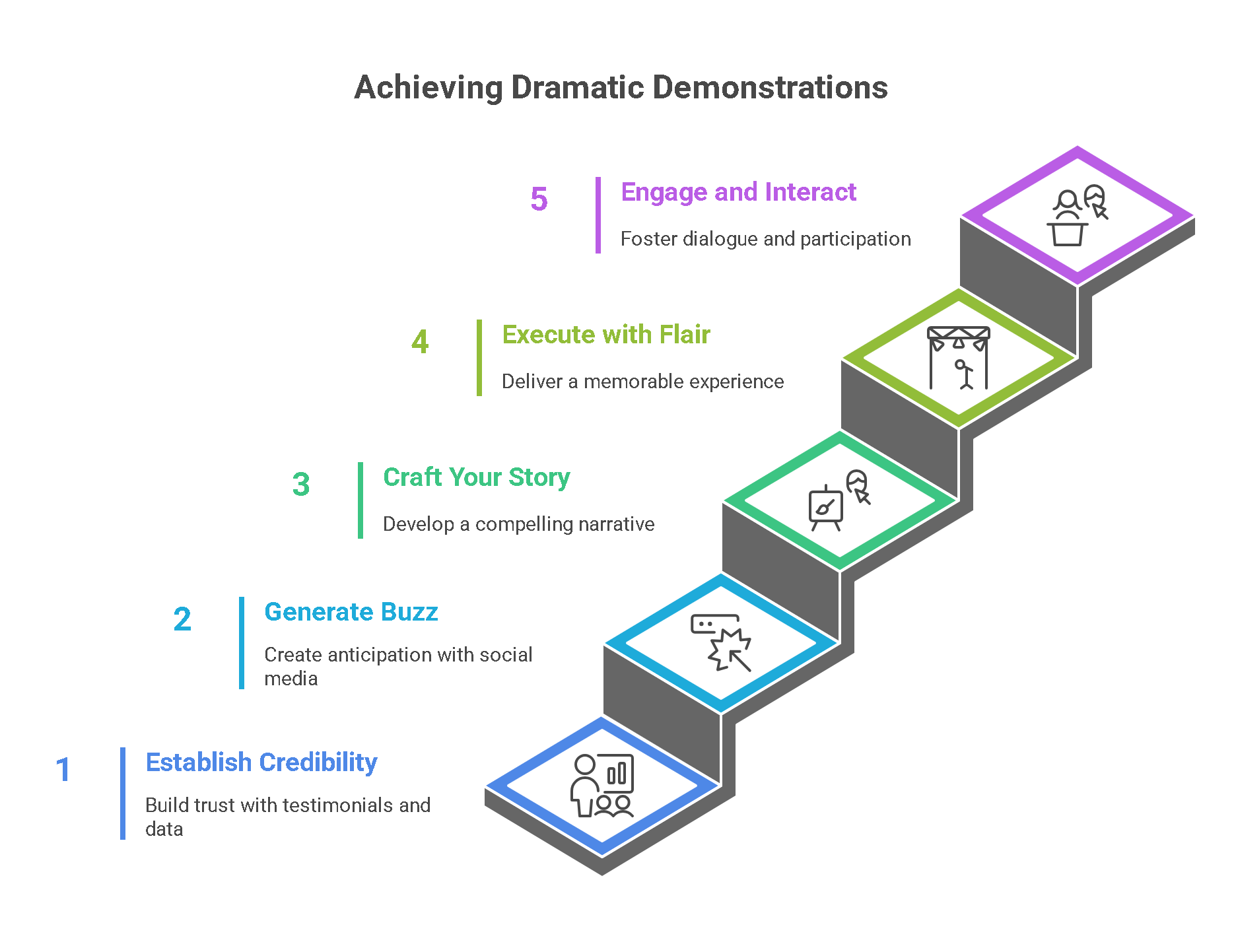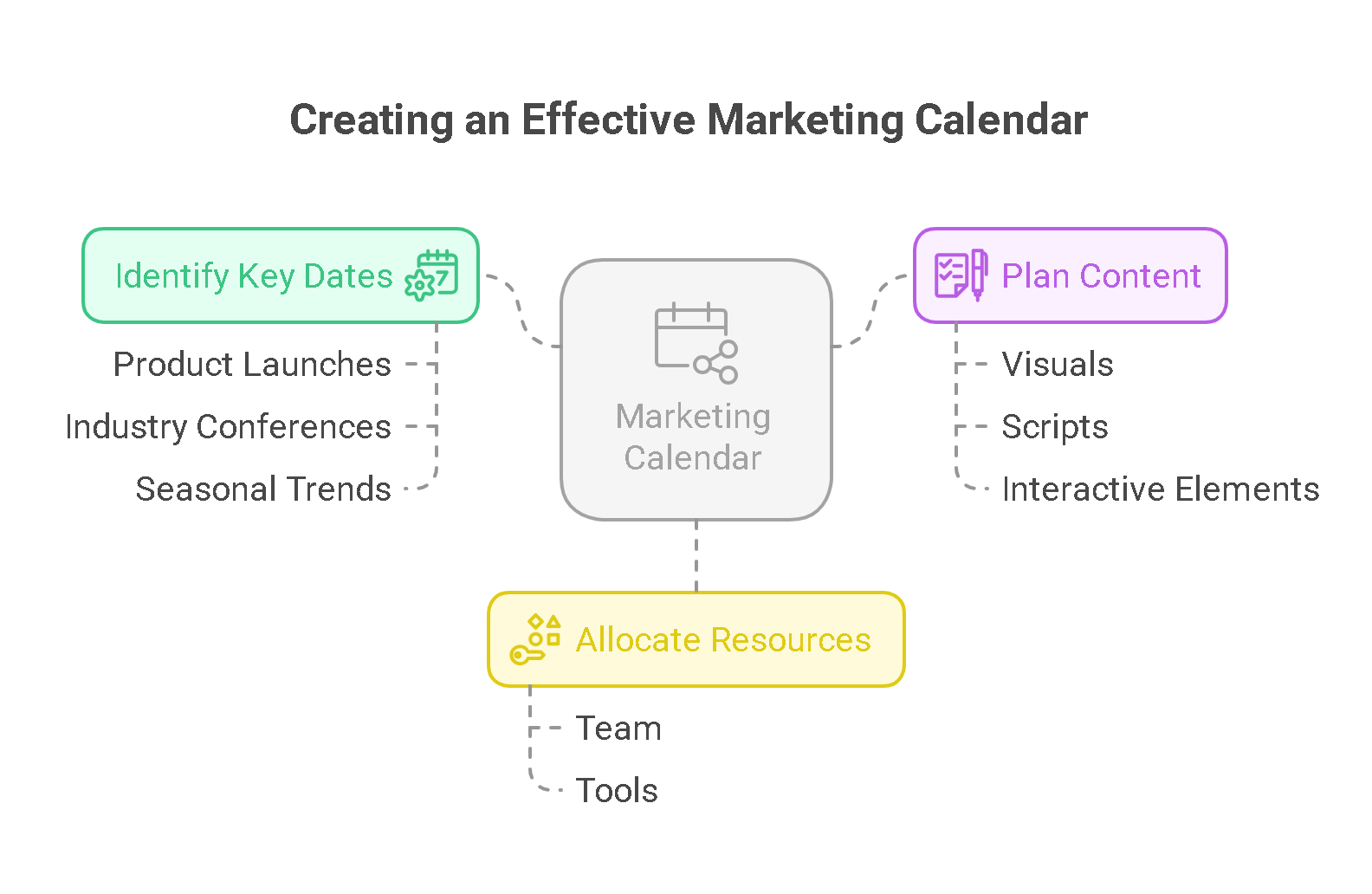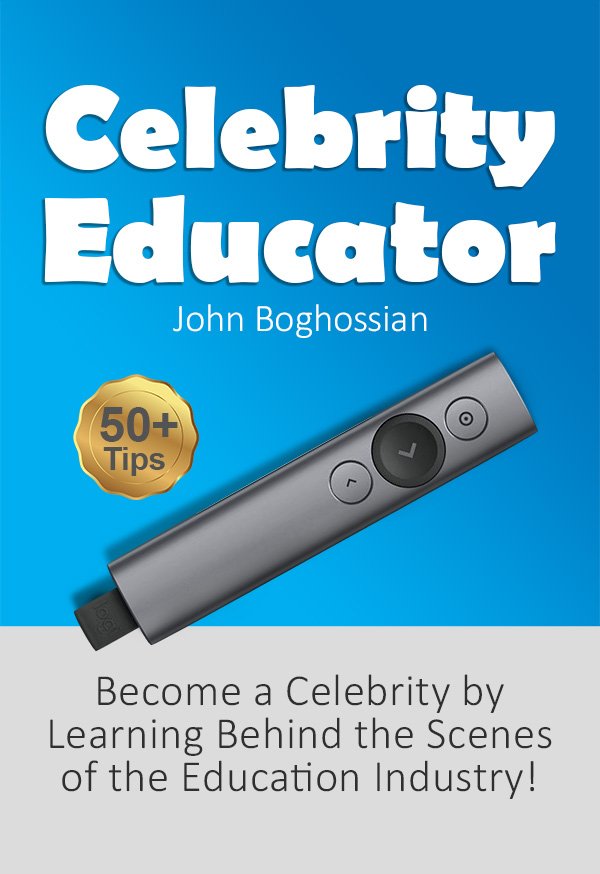Contents
- 1 Welcome and Introduction
- 2 What is a Dramatic Demonstration?
- 3 The Importance of Engagement
- 4 Overview of the Agenda
- 5 Five Steps to Dramatic Demonstrations
- 6 Creating Buzz Before Launch
- 7 Case Studies: PT Barnum’s Techniques
- 8 The Hook, Story, and Offer Framework
- 9 Crafting Your Own Hooks
- 10 Using Webinars and Challenges as Demonstrations
- 11 Analyzing Successful Demonstrations
- 12 Developing Your Marketing Calendar
- 13 The Role of Influencers in Promotions
- 14 Final Thoughts and Next Steps
In the world of marketing, capturing attention is paramount. Join Russell Brunson and Steve Larson as they explore the transformative concept of ‘dramatic demonstrations’—a method designed to amplify your lead flow and engage your audience like never before. This blog delves into the key insights from their masterclass, providing a comprehensive guide to implementing dramatic demonstrations in your own marketing strategy.
Welcome and Introduction
Welcome to the world of dramatic demonstrations, where we transform the ordinary into the extraordinary. As we embark on this journey, envision the possibilities that await when you harness the power of these compelling presentations. The excitement in the air is palpable, and we’re thrilled to guide you through the intricacies of making your marketing endeavors truly unforgettable.
Setting the Stage
Imagine stepping into an arena filled with anticipation, where every eye is on you, waiting for the spectacle to unfold. This is the realm of dramatic demonstrations—a space where engagement and innovation go hand in hand. Whether you’re a seasoned marketer or new to the field, the principles we’ll explore will offer fresh perspectives and actionable insights.
What is a Dramatic Demonstration?
A dramatic demonstration is more than just a presentation; it’s a strategic orchestrated event designed to captivate and convert. It involves creating a vivid, memorable experience that highlights the core value of your product or service. The goal is to leave a lasting impression that resonates with your audience, compelling them to take action.
Breaking Down the Concept
- Visual Impact: Use striking visuals to grab attention and convey your message succinctly.
- Emotional Connection: Engage your audience emotionally to create a deeper connection.
- Clear Messaging: Ensure your core message is clear and easily understood.
- Interactive Elements: Incorporate interactive elements to maintain engagement and participation.

The Importance of Engagement
In today’s fast-paced digital landscape, engagement is the currency of success. Without it, even the most innovative ideas can fall flat. Engaging your audience means inviting them to be a part of your story, to feel invested in the outcome. This emotional buy-in is what converts passive viewers into active participants.
The Role of Storytelling
Storytelling is a powerful tool in the arsenal of dramatic demonstrations. It transforms data into digestible narratives, helping your audience relate to the message on a personal level. By weaving a compelling story, you create a framework where your audience can see themselves and their needs being addressed.
Overview of the Agenda
Our journey today will cover several key areas that are essential to mastering dramatic demonstrations. Each section is designed to build upon the last, providing a comprehensive understanding of how to effectively implement these techniques in your marketing strategy.
Key Topics
- Understanding the core principles of dramatic demonstrations.
- Exploring the psychological triggers that drive engagement.
- Step-by-step guidance on crafting your own dramatic demonstration.
- Case studies and examples from industry leaders.
- Interactive workshops to apply what you’ve learned.
Five Steps to Dramatic Demonstrations
Creating a dramatic demonstration involves a structured approach. Here are the five steps that will guide you from concept to execution:
Step 1: Establish Credibility
Before you can engage your audience, you must earn their trust. This involves showcasing your expertise and the value of your offering. Use testimonials, case studies, and data to reinforce your credibility.
Step 2: Generate Buzz
Build anticipation and excitement before the actual event. Utilize social media, teasers, and influencer partnerships to create buzz and pique interest. This pre-launch phase is crucial for setting the stage for your demonstration.
Step 3: Craft Your Story
Develop a narrative that aligns with your brand and resonates with your audience. Your story should highlight the problem your product solves, the journey to the solution, and the benefits of choosing your brand.
Step 4: Execute with Flair
On the day of the demonstration, ensure every element is meticulously planned and executed. From the visuals to the spoken word, every component should work harmoniously to deliver a memorable experience.
Step 5: Engage and Interact
During the demonstration, actively engage with your audience. Encourage questions, foster dialogue, and invite participation. This interaction not only enhances the experience but also deepens the connection with your brand.

Creating Buzz Before Launch
Building anticipation is an art form, and when done correctly, it can catapult your product or service to new heights before it even hits the market. The key lies in generating enough curiosity and excitement that your audience is eagerly awaiting your launch.
Start by leveraging social media platforms to drop hints and teasers about your upcoming launch. These can be as simple as cryptic posts or countdowns that build intrigue. Collaborate with influencers who align with your brand and have them share your teasers to extend your reach.
Consider hosting a live event or webinar where you give away valuable content or insights related to your product. This not only provides value but also positions you as an authority in your field. During these events, subtly mention your upcoming launch, creating a sense of urgency and exclusivity.
- Teasers and Sneak Peeks: Share glimpses of your product or service to pique interest.
- Influencer Collaborations: Partner with influencers to widen your audience reach.
- Live Events: Host webinars or live sessions to engage your audience and build anticipation.
Case Studies: PT Barnum’s Techniques
PT Barnum was a master of creating buzz and turning it into profit. His techniques, while historical, provide timeless lessons in marketing and publicity. Barnum understood that the story you tell can be just as important as the product itself.
Barnum’s approach often involved creating a larger-than-life persona or event that captured public interest. He knew how to leverage media and public relations to his advantage, often involving multiple channels to spread his message. His famous “hoaxes” were not merely tricks but carefully orchestrated events designed to draw crowds and spark conversations.
One of Barnum’s most notable strategies was his ability to create a narrative around his attractions, making them irresistible to the public. By doing so, he ensured that people were not just buying a ticket; they were buying into an experience, a story that they wanted to be part of.
- Media Manipulation: Barnum skillfully used the media to generate excitement and coverage.
- Narrative Creation: He crafted stories around his attractions to make them more enticing.
- Public Engagement: Barnum’s strategies often involved engaging directly with the public to build hype.
The Hook, Story, and Offer Framework
The Hook, Story, and Offer framework is a powerful tool for capturing attention and converting leads. Each component plays a crucial role in the overall effectiveness of your marketing strategy.
The Hook: This is your initial attention-grabber. It should be compelling and relevant, drawing in your audience with a promise of what’s to come. A good hook can be a provocative question, a surprising fact, or a bold statement.
The Story: Once you’ve hooked your audience, it’s time to engage them with a story. This story should resonate with your audience’s experiences and emotions, creating a connection that makes them more receptive to your message.
The Offer: Finally, present your offer. It should be clear, compelling, and provide a solution to a problem your audience faces. The offer is where your audience sees the value and decides to take action.
- Crafting a Compelling Hook: Use attention-grabbing elements to draw interest.
- Engaging Storytelling: Connect with your audience through relatable stories.
- Presenting a Clear Offer: Ensure your offer is valuable and addresses your audience’s needs.

Crafting Your Own Hooks
Creating an effective hook requires creativity and a deep understanding of your audience. The goal is to make your message stand out in a sea of information and capture the attention of your target market.
Start by identifying the core problem or desire your audience has. Your hook should address this directly, offering a glimpse of the solution you provide. Use powerful language and vivid imagery to make your hook memorable.
Experiment with different types of hooks to see what resonates best with your audience. Test variations in your messaging to find the most effective approach. Remember, the best hooks are those that provoke curiosity and elicit a response.
- Identify Core Problems: Understand the main issues your audience faces.
- Use Vivid Language: Make your hook memorable with strong, descriptive language.
- Test and Iterate: Experiment with different hooks to find the most effective one.
Using Webinars and Challenges as Demonstrations
Webinars and challenges are excellent formats for dramatic demonstrations. They allow you to engage with your audience in real-time, providing value while showcasing your expertise and products.
Webinars are ideal for in-depth presentations where you can delve into the details of your offer. Use them to educate and inform, positioning yourself as a thought leader in your industry. Encourage interaction through Q&A sessions to keep your audience engaged.
Challenges, on the other hand, are more interactive and can create a sense of community. They are perfect for building momentum and excitement around your product. By guiding participants through a series of tasks or lessons, you create a structured path to transformation that highlights the benefits of your offer.
- Interactive Webinars: Use webinars to provide in-depth insights and engage with your audience.
- Community-driven Challenges: Foster a sense of community and shared achievement through challenges.
- Highlight Transformation: Show participants the potential transformation your product offers.
Analyzing Successful Demonstrations
Successful demonstrations are a testament to the power of execution and creativity. They captivate audiences by marrying the art of storytelling with strategic marketing techniques. To analyze these demonstrations, we must look at what makes them memorable and effective.
Firstly, a successful demonstration should have a strong emotional pull. This can be achieved by understanding the audience’s pain points and desires, and then crafting a narrative that speaks directly to those emotions. The story should be relatable yet compelling enough to inspire action.
Moreover, the use of visual elements cannot be overstated. Striking visuals not only grab attention but also help in reinforcing the message being conveyed. A well-thought-out visual strategy can turn a good demonstration into a great one.
- Emotional Resonance: Tap into the audience’s emotions to create a lasting impact.
- Visual Appeal: Utilize engaging visuals to enhance the demonstration’s effectiveness.
- Clear Value Proposition: Clearly communicate the benefits and value of your offering.
Case Studies of Effective Demonstrations
Examining past demonstrations gives us insights into what works and why. One such example is Apple’s product launches. Each launch is a carefully orchestrated event that highlights the product’s unique features while building anticipation and excitement.
Another example is Red Bull’s marketing stunts, such as the Red Bull Stratos jump. This event captured global attention, not just because it was thrilling, but because it aligned perfectly with Red Bull’s brand image of pushing limits.
- Apple’s Product Launches: Effective storytelling combined with sleek presentations.
- Red Bull’s Stunts: Aligning brand values with dramatic, shareable events.
Developing Your Marketing Calendar
Creating a marketing calendar is essential for organizing and executing your promotional efforts effectively. A well-structured calendar ensures that your dramatic demonstrations are timely and impactful.
Start by identifying key dates and events relevant to your industry. These could include product launches, industry conferences, or seasonal trends. Align your demonstrations with these dates to maximize visibility.
Next, plan out the content and resources needed for each demonstration. This includes visuals, scripts, and any interactive elements. Ensuring that all elements are prepared in advance will streamline the execution process.
Steps to Create an Effective Marketing Calendar
- Identify Key Dates: Align your demonstrations with industry events and trends.
- Plan Content: Prepare all necessary materials and resources in advance.
- Allocate Resources: Ensure you have the team and tools needed for execution.

The Role of Influencers in Promotions
Influencers play a pivotal role in amplifying the reach of your dramatic demonstrations. Their established audiences and credibility can significantly enhance your promotional efforts.
When selecting influencers, ensure they align with your brand values and target audience. An influencer’s endorsement can lend authenticity and trust to your demonstration, making it more persuasive.
Collaborate with influencers to create engaging content that complements your demonstration. This could be behind-the-scenes footage, interviews, or exclusive previews. Such content not only builds anticipation but also fosters a sense of community around your product or service.
- Align with Brand Values: Choose influencers who share your brand’s ethos.
- Create Engaging Content: Work with influencers to produce complementary content.
- Foster Community: Use influencer partnerships to build a community around your product.
Final Thoughts and Next Steps
Implementing dramatic demonstrations can transform your marketing strategy from ordinary to extraordinary. By engaging your audience emotionally and visually, you create memorable experiences that drive action.
The next step is to take these insights and apply them to your own business. Start small, refine your approach, and build on your successes. Remember, the key to a successful demonstration is not just in the execution but in the planning and preparation.
As you embark on this journey, keep testing and iterating. Learn from each demonstration and continuously seek ways to improve. With dedication and creativity, your dramatic demonstrations will not only captivate but also convert.
- Start Small: Begin with manageable demonstrations and scale as you learn.
- Refine and Iterate: Continuously improve based on feedback and results.
- Engage and Convert: Focus on creating experiences that lead to action.








